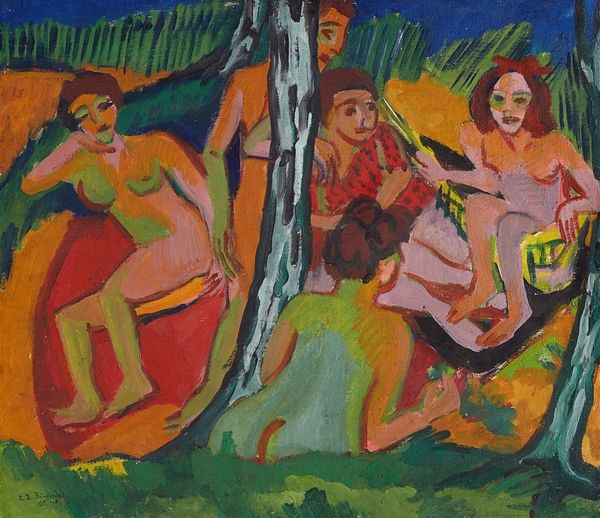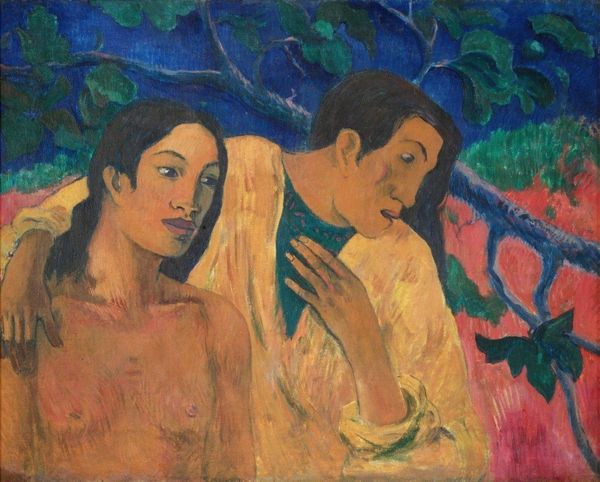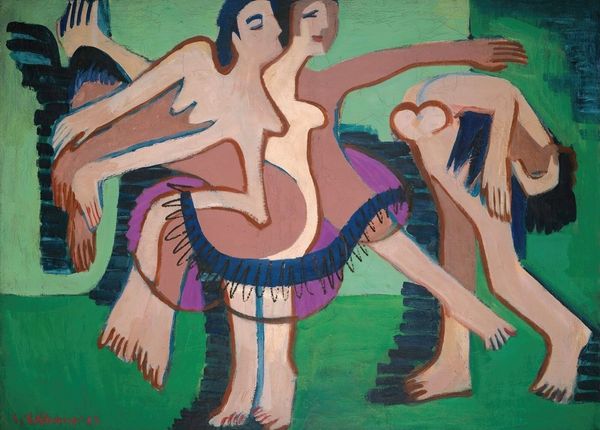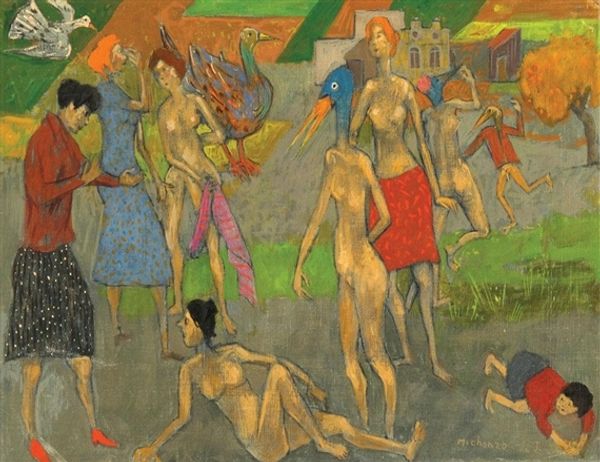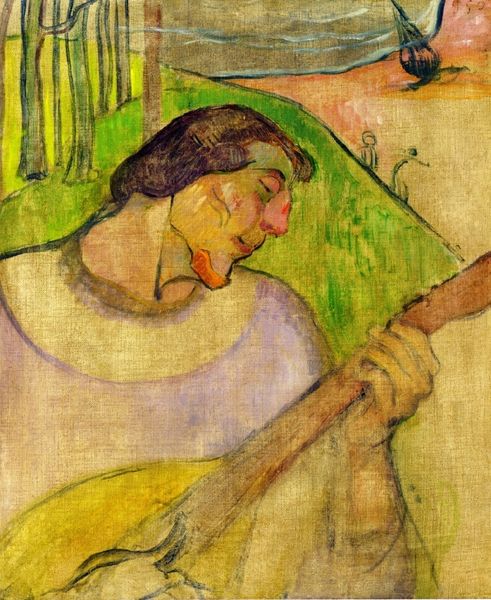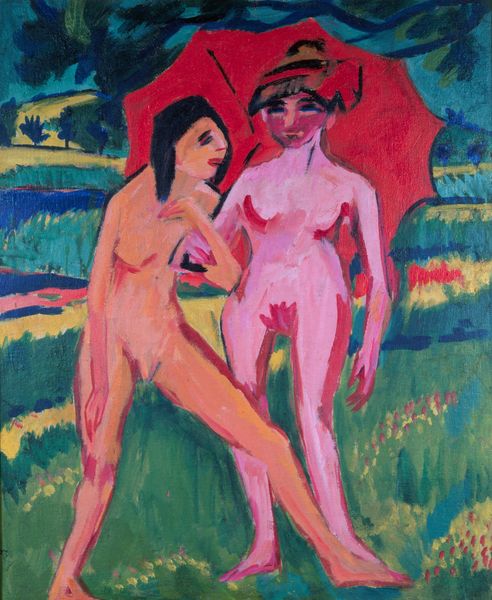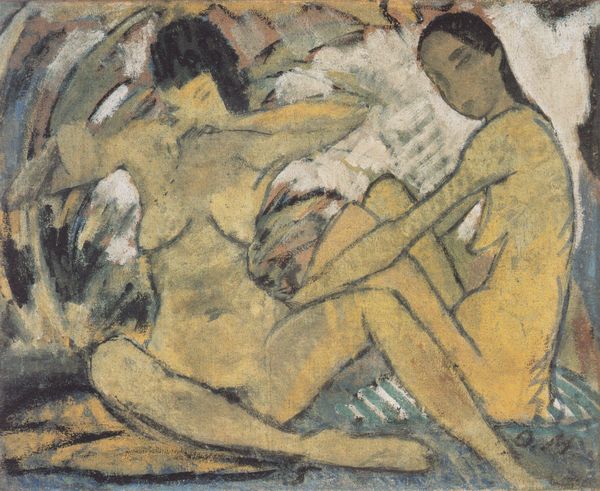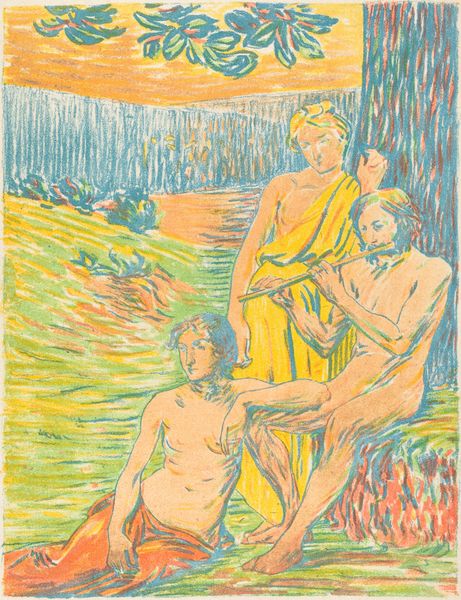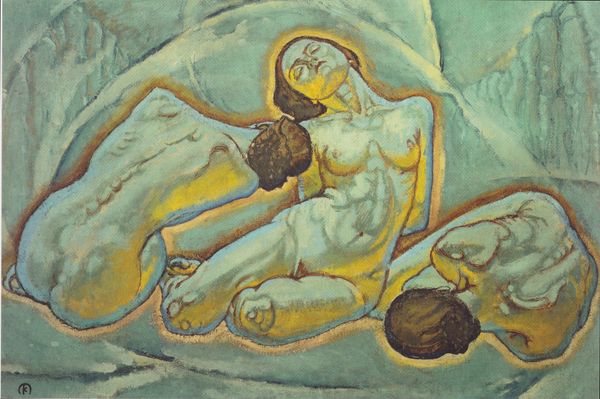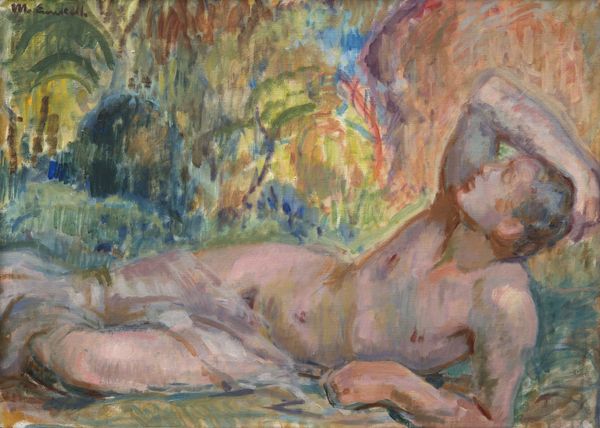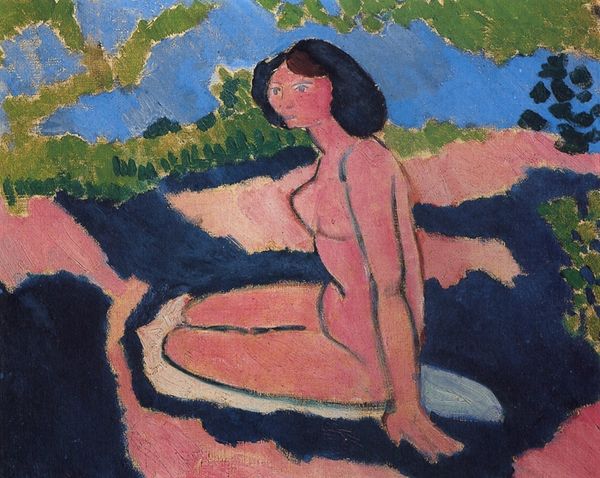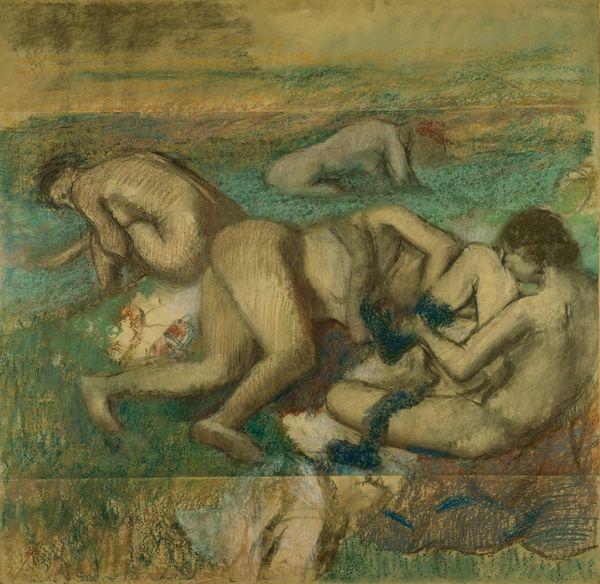
painting, oil-paint
#
painting
#
oil-paint
#
landscape
#
figuration
#
symbolism
#
history-painting
#
academic-art
#
portrait art
#
realism
Copyright: Public domain
Art Historian:Editor: Editor: Standing here, we’re looking at Ferdinand Hodler’s "Der Frühling," or "Spring," created in 1901. It's an oil painting that presents two figures in a blossoming landscape. I’m struck by the stillness, the sort of frozen moment. What stands out to you? Art Historian: What I notice is Hodler's process. The layering of oil paints to depict these figures and the landscape around them—dandelions dotting the meadow—points to a specific labor and technique. He used oil, a material available due to particular industrial and trade networks of his time, and applied it in a way that speaks to both academic tradition and symbolic innovation. Do you see the contrast? Editor: Yes, it feels deliberate. He's using this very traditional medium to express a more modern sentiment, perhaps? But how does that affect our interpretation of "spring" itself? Art Historian: Consider the socio-economic conditions: the rise of industrialization, the changing relationship to the natural world. "Spring" here isn't just a season but also a reflection of the longing for a simpler, perhaps idealized, pre-industrial life. Hodler uses the materiality of his paint – the thickness, the texture – to create a world that’s tangible yet also symbolic. Notice how the repetitive floral patterns almost seem mass-produced. How does this repetition impact your sense of the organic "spring"? Editor: I see what you mean; it's less about pure nature and more about nature processed through a lens of human intervention and perhaps longing. Almost manufactured, really. Art Historian: Precisely! So, how might the value and appreciation of this painting be tied to understanding both the materials used to make it and the broader social context of its making? Editor: This definitely reframes my initial impression of simple beauty. Looking at it through the lens of material and labor reveals a much richer, more complex picture, hinting at industrialization's influence and societal longing. Art Historian: Indeed, art is not created in a vacuum. Thinking critically about how material realities shape artistic choices gives us insight to understanding not only this artwork, but others as well.
Comments
No comments
Be the first to comment and join the conversation on the ultimate creative platform.
